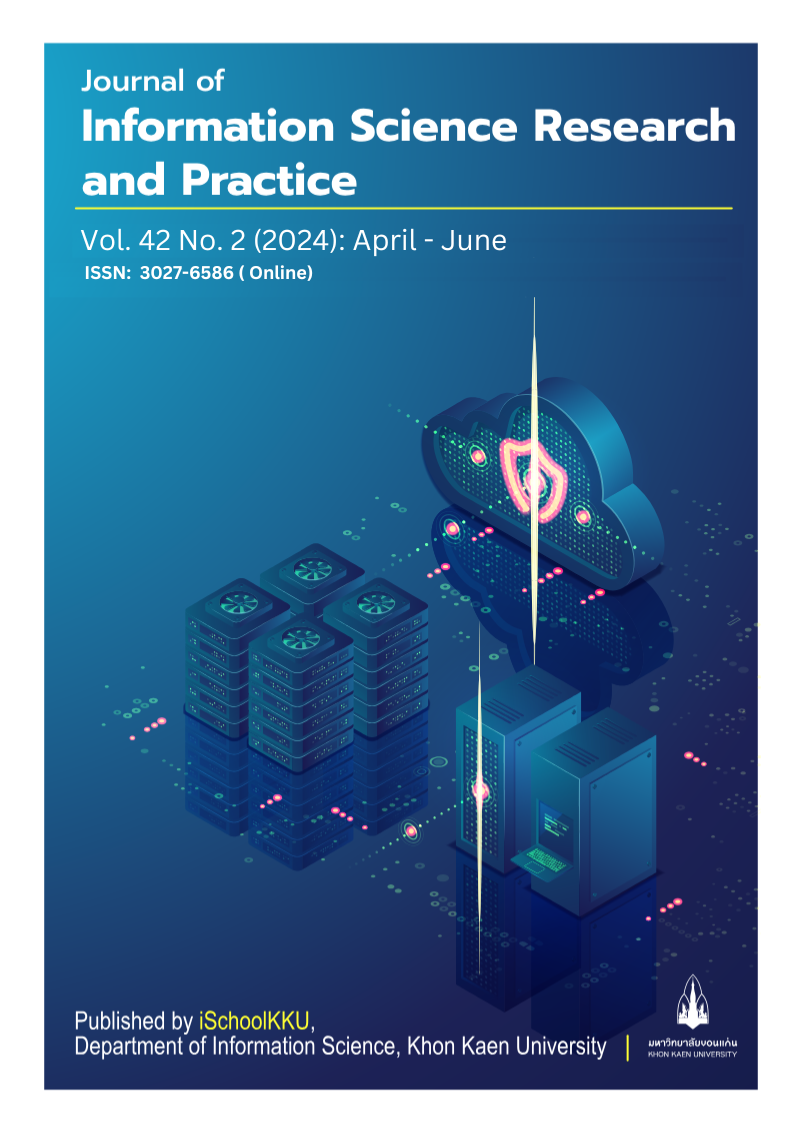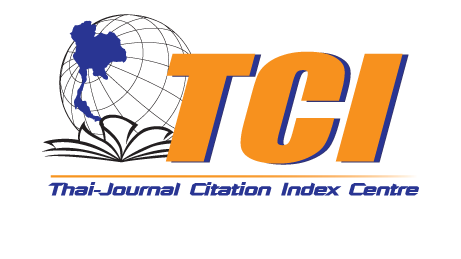The Constraints of Students’ Digital Literacy during the COVID-19 Pandemic
DOI:
https://doi.org/10.14456/jiskku.2024.14คำสำคัญ:
Digital literacy, COVID-19, Online learning, Academic performance, ICT, NEMSU Cantilanบทคัดย่อ
Purpose: This study delved into the constraints faced by students in terms of digital literacy amidst the COVID-19 pandemic at North Eastern Mindanao State University (NEMSU) Cantilan Campus. It specifically focused on addressing the challenges encountered by informants due to their adverse experiences with information and communications technology (ICT), which subsequently impacted their academic performance.
Methodology: The study employed a qualitative research method utilizing an interview guide to investigate the challenges faced by students in online learning during the height of the pandemic at NEMSU Cantilan Campus. The researchers randomly selected and interviewed 22 informants, with 2 from each program of the university. The study used thematic analysis to interpret data, identify meaningful information, and organize it into themes.
Findings: Based on the findings of the study, the researchers identified emergent themes, namely: Unreliable Internet Connection, Poor Knowledge in using ICT, and Disruptive Background Noise. The study highlighted the significant impact of slow or unreliable internet connections on students' ability to engage effectively with ICT. The selected men and women who were interviewed expressed frustration and limitations in accessing online resources, communicating with others, and completing tasks due to connectivity issues. Moreover, the informants expressed difficulties in navigating digital platforms, understanding software applications, and utilizing ICT tools effectively. Additionally, the presence of disruptive background noise emerged as a significant barrier to effective communication and concentration during online interactions.
Applications of this study: The findings of the study highlighted the necessity for educational institutions like NEMSU to improve digital literacy programs. Students can gain technical abilities in navigating online platforms by adding thorough ICT instruction into their curriculum. Educational institutions and policymakers may work together to ensure that students have stable and high-speed internet access, allowing for seamless online learning experiences and improving internet infrastructure. Addressing the problems expressed by the informants in accessing digital platforms and efficiently employing ICT tools emphasize the importance of providing continuing technical help to students. Offering workshops, tutorials, and tools can help students overcome technology barriers and improve their digital skills.
Downloads
เอกสารอ้างอิง
Adnan, M., & Anwar, K. (2020). Online learning amid the COVID-19 pandemic: Students perspectives. Journal of Pedagogical Research, 1(2), 45–51. https://doi.org/10.33902/jpsp.2020261309
Asadullah, M., Yeasmin, M., Alam, A. F., Alsolami, A. S., Ahmad, N., & Atoum, I. A. (2023). Towards a sustainable future: a systematic review of mobile learning and studies in higher education. Sustainability, 15(17), 12847–12847. https://doi.org/10.3390/su151712847
Asio, J. M. R., Gadia, E., Abarintos, E., Paguio, D., & Balce, M. (2021). Internet connection and learning device availability of college students: basis for institutionalizing flexible learning in the new normal. Studies in Humanities and Education, 2(1), 56–69. https://doi.org/10.48185/she.v2i1.224
Baker, R., Camosso-Stefinovic, J., Gillies, C., Shaw, E. J., Cheater, F., Flottorp, S., & Robertson, N. (2010). Tailored interventions to overcome identified barriers to change: effects on professional practice and health care outcomes. Cochrane Database of Systematic Reviews, 17(3), CD005470. https://doi.org/10.1002/14651858.cd005470.pub2
Butarbutar, R., Sauhenda, A. F., Marlina, S., & Radja Leba, S. M. (2021). Challenges and opportunities of accelerated digital literacy during the COVID-19 pandemic. Hong Kong Journal of Social Sciences, 57, 160–168.
Can, E. (2020). Coronavirüs (COVID-19 ) pandemisi ve pedagojik yansımaları: Türkiye’de açık ve uzaktan eğitim uygulamaları. AUAd, 6(2),11-53.
Carlson, R., Chandler, P., & Sweller, J. (2003). Learning and understanding science instructional material. Journal of Educational Psychology, 95(3), 629–640. https://doi.org/10.1037/0022-0663.95.3.629
Chatarajupalli, S., Venkatswamy, G., & Aryasri, A. R. (2010). Leveraging e-Learning for Enhancing Employability of Students. 2010 Developments in E-Systems Engineering, 107–112. https://doi.org/10.1109/dese.2010.25
Cullinan, J., Flannery, D., Harold, J., Lyons, S., & Palcic, D. (2021). The disconnected: COVID-19 and disparities in access to quality broadband for higher education students. International Journal of Educational Technology in Higher Education, 18(1), 1-21. https://doi.org/10.1186/s41239-021-00262-1
Daniel, S. J. (2020). Education and the COVID-19 pandemic. PROSPECTS, 49(1), 91–96. https://doi.org/10.1007/s11125-020-09464-3
Donker, A. S., de Boer, H., Kostons, D., Dignath van Ewijk, C. C., & van der Werf, M. P. C. (2014). Effectiveness of learning strategy instruction on academic performance: A meta-analysis. Educational Research Review, 11(1), 1–26. https://doi.org/10.1016/j.edurev.2013.11.002
Gierdowski, D. (2021). Student experiences with connectivity and technology in the pandemic. Retrieved from https://www.educause.edu/ecar/research-publications/2021/student-experiences-with-connectivity-and-technology- in-the-pandemic/introduction-and-key-findings
Häggman-Laitila, A., Mattila, L.-R., & Melender, H.-L. (2016). A systematic review of the outcomes of educational interventions relevant to nurses with simultaneous strategies for guideline implementation. Journal of Clinical Nursing, 26(3-4), 320–340. https://doi.org/10.1111/jocn.13405
Harju, V., Koskinen, A., & Pehkonen, L. (2019). An exploration of longitudinal studies of digital learning. Educational Research, 61(4), 388–407. https://doi.org/10.1080/00131881.2019.1660586
Jaradat, S., & Ajlouni, A. (2021). Undergraduates’ perspectives and challenges of online learning during the COVID-19 pandemic: a case from the university of Jordan. Journal of Social Studies Education Research, 12(1), 149–173.
Kasımoğlu, S., Bahçelerli, N. M., & Çelik, M. U. (2022). Digital literacy during COVID-19 distance education; evaluation of communication-based problems in line with student opinions. Frontiers in Psychology, 13. https://doi.org/10.3389/fpsyg.2022.809171
Lusianai, W. O., Rachim, M. D., Muliati, & Astin. (2022). Digital literacy of open access services to support online learning during the COVID-19 pandemic. Jurnal Pemberdayaan Masyarakat Madani (JPMM), 6(2), 325-350. https://doi.org/10.21009/JPMM.006.2.09
Marinoni, G., & Land, H. van’t. (2020). The impact of COVID-19 on global higher education. International Higher Education, 102, 7–9.
Ohle-Peters, A., & Shahat, M. A. (2023). Differences in instructional quality during the COVID-19 pandemic between Oman and Germany and the role of teacher competences. Frontiers in Education, 8, 1–13. https://doi.org/10.3389/feduc.2023.1244548
Özparlak, Ç. S. (2022). Digital literacy and views of the COVID-19 pandemic of students who prepared for musical aptitude tests during the pandemic. International Journal of Education and Literacy Studies, 10(1), 26. https://doi.org/10.7575/aiac.ijels.v.10n.1p.26
Rahiem, M. D. H. (2020). Technological barriers and challenges in the use of ICT during the COVID-19 emergency remote learning. Universal Journal of Educational Research, 8(11B), 6124–6133. https://doi.org/10.13189/ujer.2020.082248
Reid, J. R., & Baker, R. S. (2018). Designing and testing an educational innovation. Pediatric Radiology, 48(10), 1406–1409. https://doi.org/10.1007/s00247-018-4193-x
Richards, E., Aspegren, E., & Mansfield, E. (2021). A year into the pandemic, thousands of students still can’t get reliable WiFi for school. The digital divide remains worse than ever. Retrieved from https://www.usatoday.com/story/news/education/2021/02/04/covid-online-school-broadband-internet-laptops/3930744001/
Sarraipa, J., Ferreira, J. J., Marcelino-Jesus, E., Artifice, A., Lima, C., & Kaddar, M. (2016). Technological Innovations tackling Students dropout. Proceedings of the 7th International Conference on Software Development and Technologies for Enhancing Accessibility and Fighting Info-Exclusion, (112–118). New York: Association for Computing Machinery. https://doi.org/10.1145/3019943.3019960
Schneckenberg, D. (2009). Understanding the real barriers to technology-enhanced innovation in higher education. Educational Research, 51(4), 411–424. https://doi.org/10.1080/00131880903354741
Sweller, J. (1994). Cognitive load theory, learning difficulty, and instructional design. Learning and Instruction, 4(4), 295–312. https://doi.org/10.1016/0959-4752(94)90003-5
Team, L. (2023). Importance of digital literacy skills for students learning. Retrieved from https://www.learning.com/blog/reasons-digital-literacy-is-important-for-students
Telli, S. G., & Altun, D. (2020). Coronavirüs ve çevrimiçi (online) eğitimin önlenemeyen yükselişi. Üniversite Araştırmaları Dergisi, 3(1), 25–34. https://doi.org/10.32329/uad.711110
Villarreal, M. E., Villa-Ochoa, J. A., & Galleguillos, J. (2022). Experiences of preservice mathematics teachers during their education in times of pandemic. ZDM – Mathematics Education, 55(1), 235–248. https://doi.org/10.1007/s11858-022-01461-4







